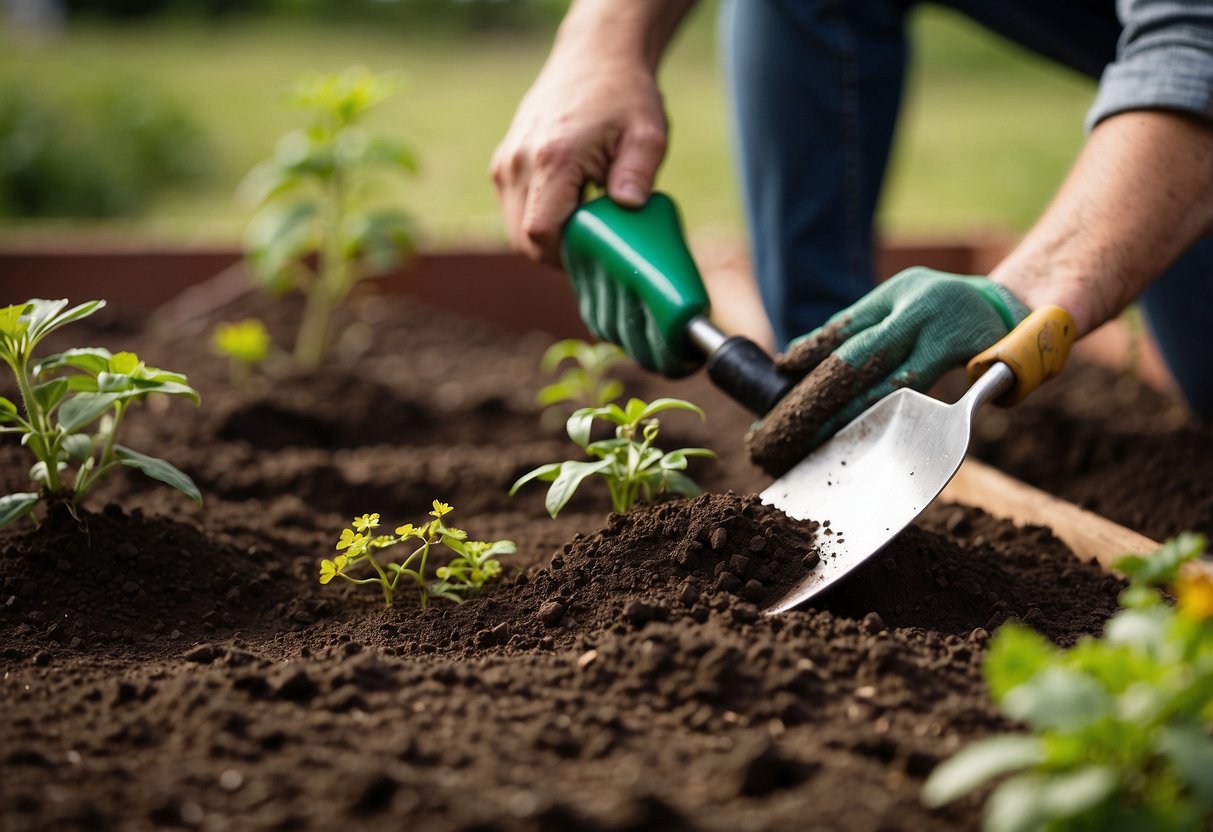DIY Gardening Tools: Comprehensive Reviews and Buying Guide for Your Garden
Planting and Transplanting: Trowels, Dibbers, and More

For various planting and transplanting tasks, gardeners rely on tools like trowels, dibbers, spades, and shovels. Each tool has unique features and is designed for specific types of plants and soil conditions, ensuring effective and efficient gardening.
The Utility of Hand Trowels in Gardening
Hand trowels are essential for gardeners, used primarily for digging small holes for planting seeds, bulbs, and seedlings. Their small, robust blades allow for precise work in tight spaces. Made from durable materials like stainless steel, they resist rust and handle tough soil.
Comfortable grips on hand trowels reduce strain, making them easier to handle. Some ergonomic designs cater to prolonged use without causing discomfort. The tapered blade is useful for cutting through roots and compacted soil, offering versatility.
Transplanting Tools for Delicate Operations
Transplanting tools, like dibbers, are designed for delicate tasks such as moving seedlings without damaging roots. Dibbers create evenly spaced holes that ensure optimal planting conditions. These pointed sticks efficiently push soil aside without disturbing the plant’s root system.
Specialized hand trowels with narrow, elongated blades are also used in transplanting. Their slender shape allows access to tight areas and minimizes root disruption. Some models include measurements on the blade, aiding in accurate planting depth.
Garden Spades and Shovels for Larger Plants
For larger plants and heavier soil work, garden spades and shovels are indispensable. Garden spades feature flat, sharp blades suitable for cutting through sod and roots, as well as edging garden beds. Long-handled versions offer better leverage and allow gardeners to work without bending too much.
Round point shovels are ideal for digging large holes for planting shrubs or trees. Their pointed tips penetrate hard soil easily, and the curved blades hold substantial amounts of earth. These are the best options when substantial soil movement is required.
Watering and Irrigation: Can, Hose, or Drip System?
Efficiently watering your plants is crucial for garden maintenance. Various tools like watering cans, garden hoses, and drip systems cater to different needs and gardening styles. Understanding the features, and benefits of each type can help you choose the right one for your garden.
Choosing a Watering Can: Sizes and Materials
Watering cans come in different sizes and materials, which can affect their convenience and durability. Metal cans are sturdy and can last longer, while plastic cans are lightweight, making them easier to handle. Capacity ranges from small 1-liter cans for indoor plants to larger 10-liter cans suitable for outdoor gardens.
Choosing the right size depends on the scale of your garden and your physical strength. Small gardens or indoor plants may only require a 2-liter can, while larger gardens benefit from cans that hold more water, reducing the need for frequent refilling. Using a can with a detachable rose nozzle allows for a gentle, even distribution of water, which is essential for delicate plants and seedlings.
Hoses and Nozzles: Features for Every Gardener’s Needs
A garden hose is a versatile tool that serves various watering needs. Hoses are available in different lengths, diameters, and materials. Longer hoses are suitable for large gardens, while shorter variants are ideal for small spaces. Consider the hose material; rubber hoses are durable and less prone to kinks, while vinyl hoses are lighter and more flexible.
Hose nozzles also play a significant role in water distribution. Adjustable nozzles offer multiple spray patterns, from a gentle mist for delicate plants to a powerful jet for cleaning tasks. Pistol grip nozzles provide ergonomic features, making them comfortable to use for extended periods.
Advanced Irrigation: Simplifying Your Watering Routine
Drip irrigation systems provide an automated solution to watering, ideal for those with busy schedules or larger gardens. These systems deliver water directly to the plant roots, reducing water waste and ensuring consistent soil moisture levels. Components like drip lines, emitters, and timers can be customized to fit different garden layouts and plant types.
Installing a drip system requires an initial investment and setup, but the long-term benefits include water conservation and time savings. Individual emitters can be adjusted to regulate water flow for each plant, making it possible to cater to varying hydration needs within the same garden. This system is especially beneficial for vegetable gardens, flower beds, and landscaped areas with diverse plant species.



